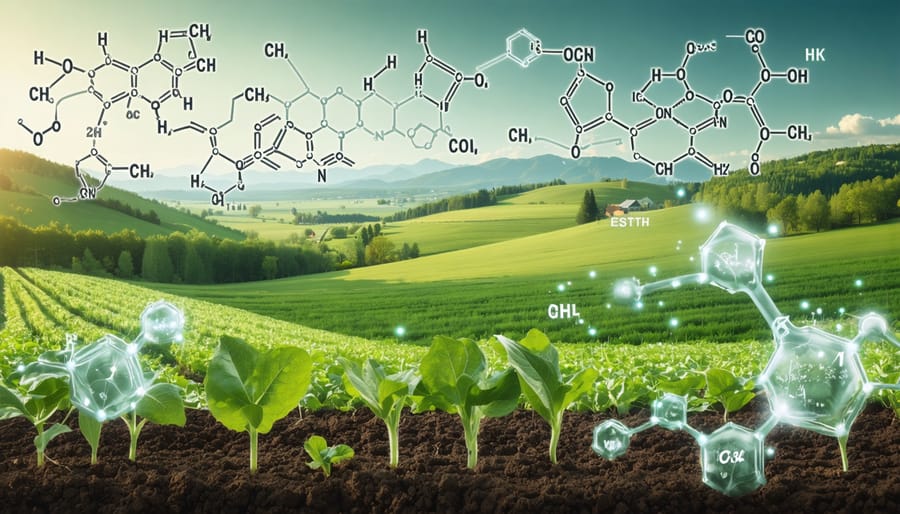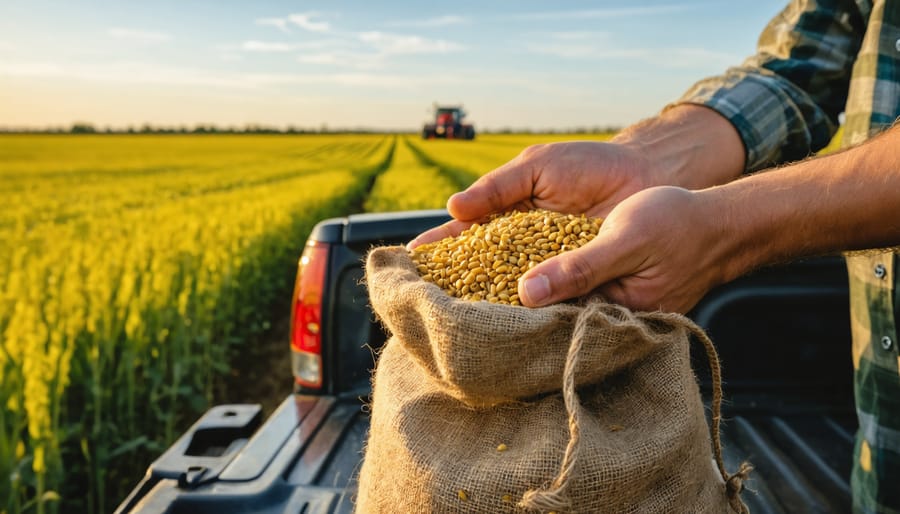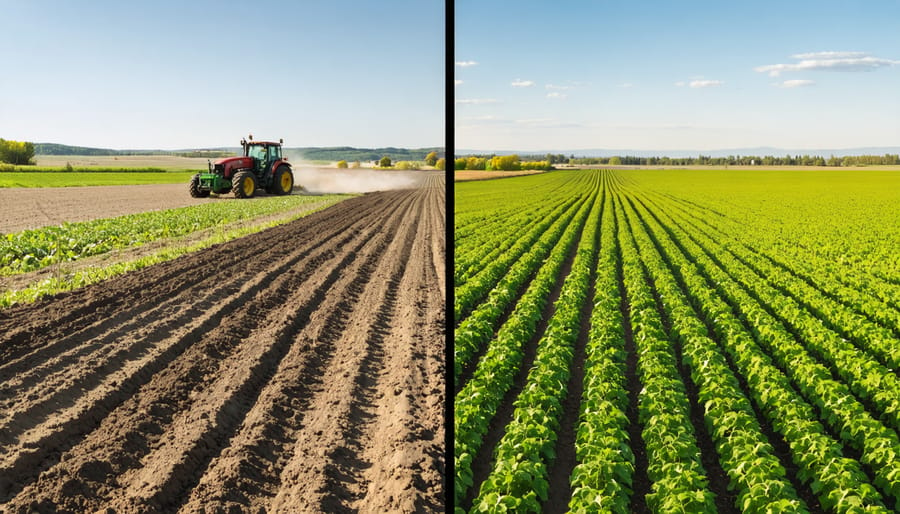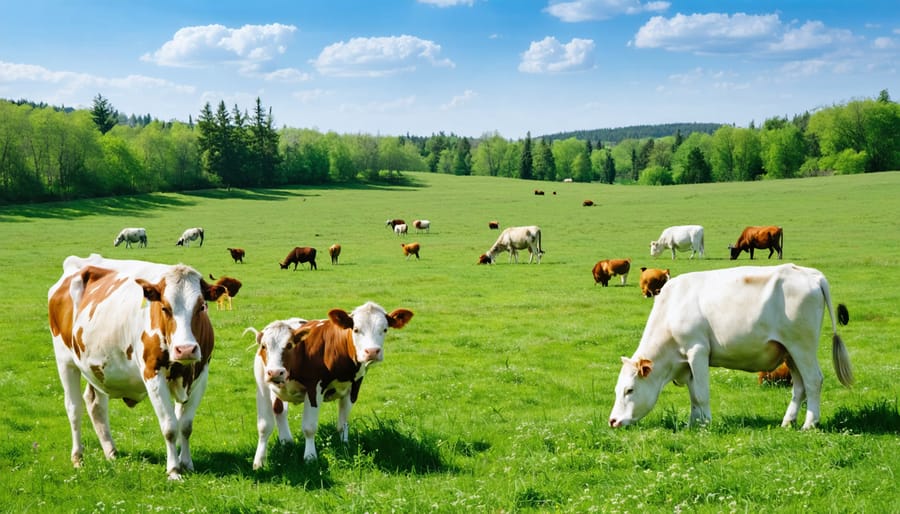Identifying organic functional groups in agricultural products demands both precision and practical knowledge that directly impacts certification and market value. For Alberta farmers transitioning to organic production, recognizing these molecular signatures serves as the foundation for ensuring product authenticity and meeting Canadian Organic Standards. From the distinctive carbonyl groups in natural preservatives to the amino acids essential for crop health, these chemical markers tell the story of a product’s organic integrity. Understanding how to identify and verify these functional groups not only safeguards organic certification but also empowers farmers to make informed decisions about processing methods, storage conditions, and quality control. Whether examining grain proteins or assessing soil amendments, mastering functional group identification has become an indispensable skill in modern organic agriculture, particularly as consumers increasingly demand transparency in their food supply chain.
What Makes Food Truly Organic?
Canadian Organic Standards
In Canada, the identification and certification of organic functional groups follows strict organic certification standards regulated by the Canadian Food Inspection Agency (CFIA). These standards require thorough documentation of all organic compounds present in agricultural products, with particular attention to functional groups that affect food quality and safety.
For Alberta farmers, this means maintaining detailed records of any chemical inputs and processes used in production. The standards specifically outline acceptable organic functional groups, including naturally occurring carboxylic acids, alcohols, and amines found in traditional farming practices. Products must be free from prohibited synthetic compounds and their associated functional groups.
Testing for compliance involves both field assessments and laboratory analysis, with special consideration given to regional growing conditions in Western Canada. Certification bodies work closely with farmers to ensure proper identification and documentation of organic functional groups throughout the production cycle. This collaborative approach helps maintain the integrity of organic products while supporting sustainable farming practices in our local agricultural community.

Key Organic Indicators in Food Products
Visual Indicators
When identifying organic products, there are several visual indicators that can help you make informed decisions. Fresh organic produce typically displays natural variations in size, shape, and colour, unlike the uniform appearance of conventionally grown products. Look for products with minor blemishes or irregular shapes, as these are common in naturally grown crops. Organic fruits and vegetables often have a shorter shelf life and may appear less waxy or shiny than their conventional counterparts.
For packaged goods, pay attention to natural colour variations and settling of ingredients, which is common in products without artificial preservatives. Organic dairy products might show cream separation, particularly in milk and yogurt. In grain products, look for natural colour variations and potentially smaller, less uniform kernel sizes.
Remember that these visual cues should be considered alongside proper certification labels, as appearance alone isn’t a definitive indicator of organic status. Local Alberta farmers markets are excellent places to observe these characteristics firsthand and discuss them with producers.

Chemical Composition
In Alberta’s agricultural landscape, organic compounds play a vital role in determining food quality and safety. Common organic compounds found in crops include carbohydrates, proteins, and lipids, each serving distinct purposes in plant growth and nutrition. These compounds contain specific functional groups that help identify their presence and properties.
For example, the fruits and vegetables grown on local farms contain hydroxyl groups (-OH) in their natural sugars, while protein-rich crops like pulses feature amino groups (-NH2). Many Alberta farmers recognize these patterns when assessing crop quality, particularly in grain testing and soil analysis.
Essential oils from crops like canola contain ester groups, which contribute to their characteristic aromas and properties. Understanding these compounds helps farmers make informed decisions about harvest timing and storage conditions. Local success stories, like the organic wheat farms near Red Deer, demonstrate how knowledge of chemical composition directly impacts crop quality and market value.
When working with organic certification programs, familiarity with these compound structures helps farmers maintain compliance while optimizing their growing practices. This knowledge is particularly valuable during crop rotation planning and soil amendment decisions.
Alberta’s Organic Testing Methods
Field Testing Tools
Several practical field testing methods are available to Alberta farmers for quick, on-site identification of organic compounds. Essential tools include pH test strips, iodine solution for starch detection, and Benedict’s reagent for sugar testing. A portable refractometer helps measure sugar content in fruits, while a simple flame test kit can identify certain organic compounds through color changes. Many Alberta agricultural co-ops now stock basic testing kits that include these tools, making them readily accessible to local farmers. Remember to store your testing supplies in a weather-resistant container and keep them at appropriate temperatures for accurate results. Regular calibration of instruments, particularly refractometers, ensures reliable measurements throughout the growing season.
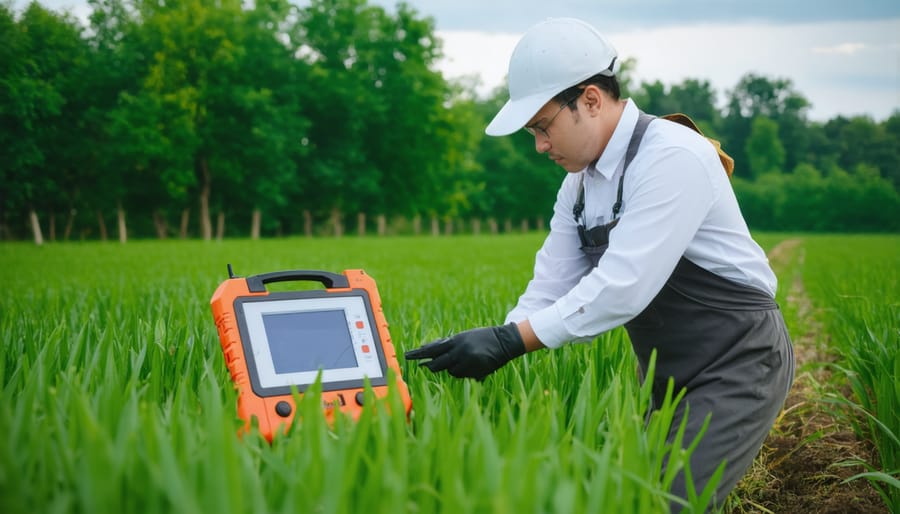
Case Study: Prairie Organic Farm
Located just outside Edmonton, Prairie Organic Farm has become a model for successful organic certification and functional group identification in Alberta. Owner Sarah Thompson, a third-generation farmer, transitioned her 200-hectare operation to organic status in 2018, focusing primarily on grains and vegetables.
Thompson implemented a systematic approach to identifying organic functional groups across her farm’s production line. She started by establishing clear documentation protocols and training her staff to recognize key organic markers in soil composition and crop health. The farm’s success stems from their detailed soil testing program, which monitors organic matter content and microbial activity throughout the growing season.
One of their innovative practices includes using specialized test strips to verify the absence of synthetic pesticides in their produce before harvest. This additional step has helped Prairie Organic Farm build trust with local retailers and consumers. Their methods have been so successful that the farm now hosts monthly workshops for other Alberta farmers interested in organic certification.
The farm’s careful attention to organic verification has resulted in a 40% increase in revenue since certification, primarily through premium pricing and expanded market access.
Understanding organic functional groups is a vital skill for Alberta’s agricultural community. By mastering these identification techniques, you can better assess soil health, verify organic certification claims, and make informed decisions about your farming practices. Remember to keep your testing materials organized and maintain detailed records of your observations. Consider joining local farming cooperatives or study groups to share experiences and knowledge with fellow producers. The Alberta Organic Producers Association offers regular workshops and training sessions to help you stay current with identification methods and organic standards. Take the next step by implementing these identification practices in your regular farm management routine, starting with simple tests on common crops and gradually expanding your expertise.

